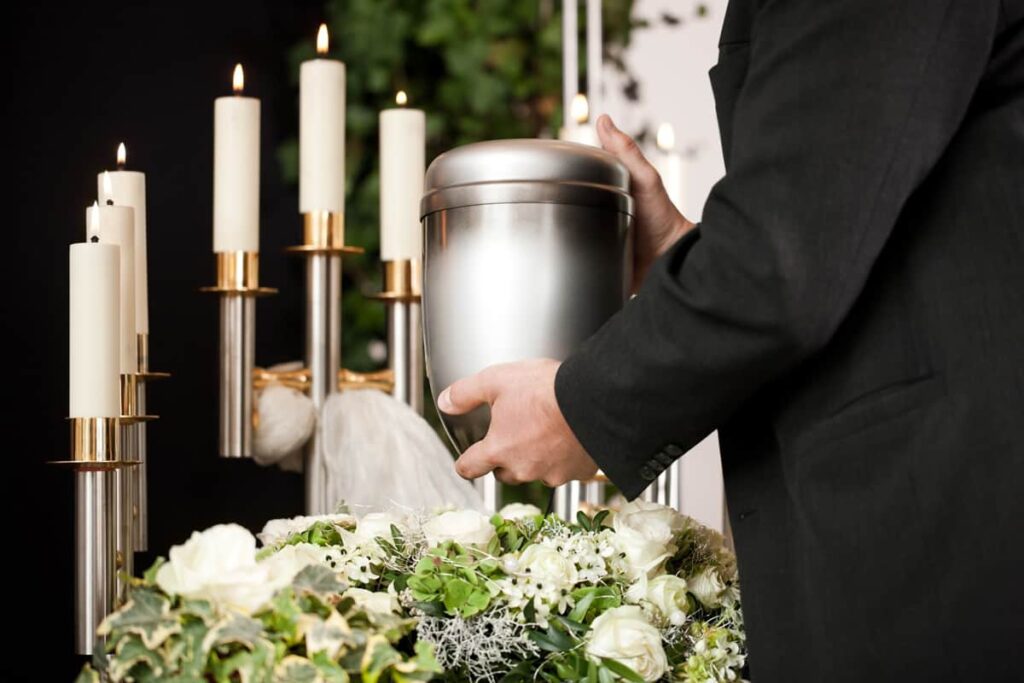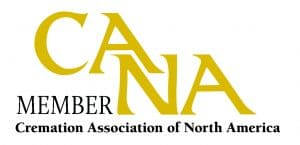Are you considering a cremation for yourself or a loved one but want to know more about what exactly what is involved? If you are looking for a step-by-step detailed explanation of the cremation process then this article has you covered. We all know how difficult it can be to make a decision about something we don’t fully understand. It is entirely normal to have questions, and the aim of this guide is to answer many of those questions. You can also use the links below to find the answers you’re looking for.
The Funeral Home/ Crematory receiving the deceased
How is the deceased’s identity verified throughout the cremation process?
How the body is prepared for cremation
What is a ‘cremation container’?
How does the cremation chamber or cremation retort work?
How are the cremated remains processed?
Who carries out the cremation?
How are cremated remains returned to the family/ next of kin?
The Funeral Home / Crematory receiving the deceased
The process begins with the funeral home or crematory receiving the deceased into their care. They will require the family to complete a Personal Details Form, which provides the funeral director with all the necessary information to begin applying for death certificates and to hold the deceased with all the current ID information.

How is the deceased’s identity verified throughout the cremation process?
There are strict guidelines and rules which all funeral homes and crematories must follow when processing a cremation. This is especially the case when it comes to the verification of ID of the deceased throughout the process.
Therefore, it is imperative that when a body is taken into care by a funeral home or crematory, it is first identified by a family member and given an ID tag. This metal tag will remain with the body throughout the cremation process and is put with the cremated remains after cremation. This ensures that there is no doubt that the cremated remains you get back are from your loved-one.
Most funeral homes will have a system in place to manage and track their cases, ensuring they know which stage of the process each case is at. This can be anything from a simple whiteboard and case file system to more sophisticated software which allows them to track and coordinate cases reliably.
How the body is prepared for cremation
Any items which the family does not wish to be cremated with the deceased, such as jewelry, will be removed during this stage of the process. They will be prepared in whatever clothes the family decides, very similar to the preparation of the body for a funeral.
This ensures that the family are able to hold a viewing before the cremation if they should so wish, allowing them to say their goodbyes in a befitting way. If a family wishes to hold a viewing, some funeral homes offer rental caskets for this purpose, as only a basic cremation container is used for the purposes of the cremation itself.
If the deceased had a pacemaker or other type of medical device, this would need to be removed to prevent it from exploding during the cremation process.

What is a ‘cremation container’?
A casket is not required for cremation, although some funeral homes will offer a wooden cremation casket. More often a standard reinforced cardboard box with a plywood base is used to hold the body. This is called a ‘cremation container’ and burns easily during the cremation process.
What are the legal requirements for a cremation to take place? What permits, authorization, and paperwork are involved?
As mentioned above, there is strict legislation governing the operation of human cremation, and this includes the submission of legal documents for processing. A Cremation Authorization Form must be signed by the immediate legal next-of-kin. A cremation cannot proceed without this form. If there is more than one next-of-kin (for example 2 or more siblings), then all siblings will be required to sign the authorization form.
The funeral director will submit to the county/ district/ municipality office for the death certificate, using the data provided by the family from the Personal Details Form. If required, he or she will also request the Permit to cremate the deceased. Some counties, districts, or municipalities require a permit before cremation, and charge for it, whereas some do not.
As cremation is such a final disposition, there is also a legal mandatory wait period after the death occurs before a cremation can go ahead. This varies by province but ranges from 24-72 hours. It generally takes 2-3 days for all the paperwork and details to be prepared anyway. During which time, the deceased will be stored in a refrigerated storage unit as embalming is not required for cremation.

How does the cremation chamber or cremation retort work?
A cremation chamber (also known as a cremation retort), is an industrial furnace that can incinerate one body at high temperatures. There are a variety of retorts, and the more modern cremation machines are operated by computer and even automated. Most are fueled by gas or propane.
The chamber has a door at one end where the cremation container is loaded. This is then sealed in order for the cremation process to begin, either manually or automatically. It is constructed of fire-resistant bricks and special masonry, housed in a stainless-steel casing, and this allows it to withstand very high temperatures. The temperature within such retorts can reach between 980 C – 1090 C, and it takes around 2 hours to completely reduce the body to bones and ashes at this temperature. Older machines may even take longer than this. But once the cremation retort has reached full heat, subsequent cremations can take less time.
Once the body is completely incinerated, a tray containing the bone fragments and ashes is extracted for the next part of the process, but they must first be allowed to cool-down for approximately 30 – 60 minutes.
How are the cremated remains processed?
After cremation, the bone fragments and ashes are first ‘sifted’ to filter out any metal debris. This could include anything from metal dental fillings to surgical pins, screws, or titanium joints/ limbs. This can be done by hand, with a magnet, or with an automated filtering system, depending on the sophistication of the crematory. This metal can then be disposed of, or more commonly now, recycled.
The bone fragments that are left are then processed in a grinding unit which pulverizes them to a fine powder, known as the cremated remains, ashes, or cremains. These are then placed with in cremation urn along with the ID tag which will have stayed with the body throughout the cremation process, as described above. At which point, the ashes are ready to be returned to the family.
Who carries out the cremation?
Generally, trained crematory operatives will run the cremation retorts and process cremation cases. Although some funeral directors may personally handle cases, a crematory operative has undergone special training to safely operate a crematory and has all the necessary knowledge and skills to properly handle the deceased throughout the process.

How long does it take from the funeral home receiving the deceased to the family receiving the cremated remains back?
As mentioned above, a cremation cannot proceed until all the relevant legal requirements and paperwork have been completed. Furthermore, because cremation is such a final disposition, there is a waiting period before a cremation can be carried out. The amount of time it takes can also be dependent on the crematory, and the schedule they have for their cremations, as there may be a backlog of cases. In most cases, it will take at least 7 days, and as much as 10 days from the time the deceased is in their care to the family receiving the cremated remains.
It is, however, possible to have a cremation expedited if all the permits and authorizations are in order, but this will likely incur an additional charge. In other occurrences, it has been known to take up to a month to process a cremation. But this is usually due to some issue with the permit or family consent of the authorization of the cremation.
How are cremated remains returned to the family/ next of kin?
The way your loved ones cremated remains are returned to you will often depend on the type of cremation you opt for. For example, if you opt for a budget direct cremation, the ashes will be returned in a temporary cardboard urn, whereas if you opt for a cremation with memorial service you will likely be required to select an urn. You may also have the option to separate cremains into multiple small keepsake urns to be divided between family members.
You will be able collect the cremated remains when you are ready (generally within 2 days of the cremation) and scatter or keep them as you should so wish. Most funeral homes provide temporary storage of ashes until you decide what to do with them. It is also possible to have the cremains mailed to the next of kin with a trackable parcel service. The cremated remains must be packaged in a sealed, sift-proof container and accompanied by a certificate of cremation. However, if you wish to have them shipped internationally you will need to check the requirements in the destination country.
Hopefully this post has answered any questions you might have had about the cremation process, but if you have further questions, check out our Cremation Resources, or Contact Us and we will assist you.

